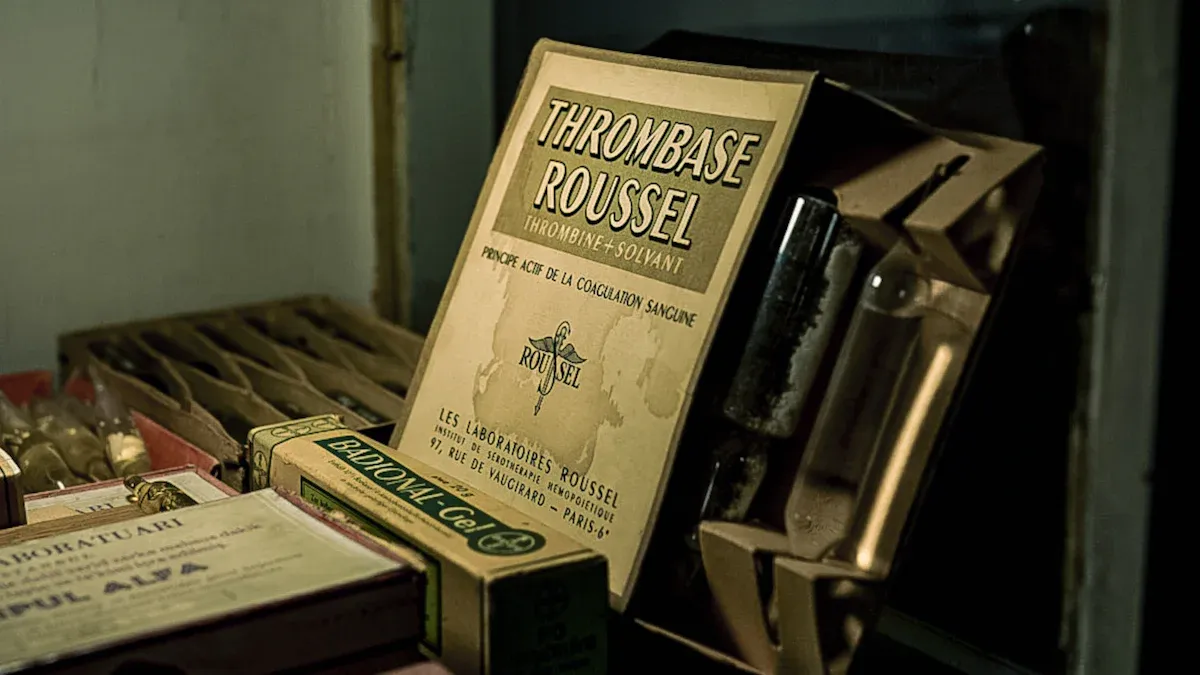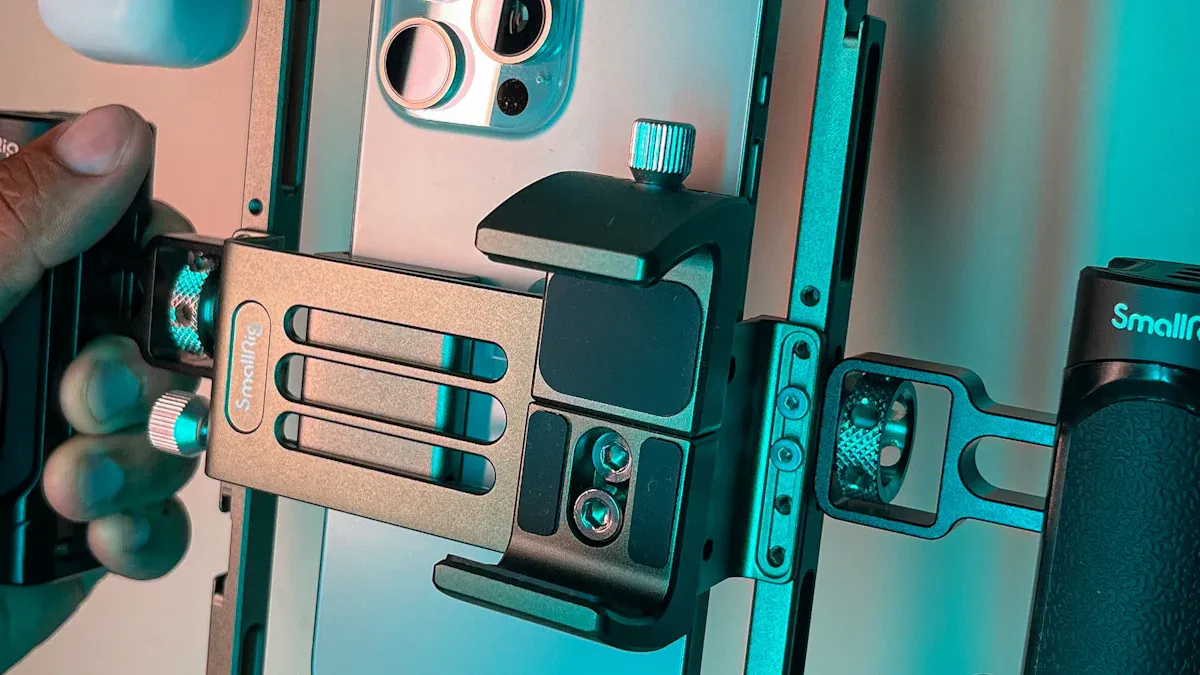Which Batteries Are Best for Flashlight Using in 2025

Choosing the right battery for flashlight using in 2025 depends on your priorities. Rechargeable batteries work well for frequent use but contain materials like cadmium and cobalt, which can harm the environment if not disposed of properly. Disposable batteries, often used in torches, create more waste but use less toxic metals like zinc and magnesium dioxide.
Key Takeaways
Rechargeable batteries cost more at first but save money later. You can save over $200 in a year if used often.
Disposable batteries are great for emergencies. They last a long time unused and work right away, perfect for blackouts.
Using rechargeable batteries helps the environment. They create less trash and are better for nature, a smart pick for regular flashlight users.
Rechargeable vs. Disposable Batteries: Key Differences

Cost and Long-Term Savings
When comparing rechargeable vs. disposable batteries, cost plays a significant role. Rechargeable batteries have a higher upfront cost. You may need to purchase a charger along with the batteries, which can make the initial investment seem expensive. However, rechargeable batteries save you money in the long run. Their ability to be reused multiple times offsets the initial expense. For instance, rechargeable flashlights typically cost $10 to $15 more than disposable ones, but they can save you over $200 in the first year alone.
Disposable batteries, on the other hand, are cheaper initially. They are ideal for those who use flashlights infrequently. However, their single-use nature leads to higher long-term costs as you need to replace them frequently.
Flashlight Type | Average Cost Difference | Long-term Savings |
|---|---|---|
Rechargeable | $10 - $15 more | Over $200 in the first year |
Disposable | Lower upfront cost | Higher battery costs |
Convenience and Accessibility
Rechargeable batteries offer convenience for frequent flashlight users. You can recharge them easily, ensuring your flashlight is always ready. However, they require access to electricity, which might not be available in remote areas. Disposable batteries, in contrast, are widely available and ready to use immediately. This makes them a practical choice for emergencies or travel.
In 2025, the availability of rechargeable batteries varies by region. The Asia-Pacific region dominates the market, while North America and Europe show stagnant growth. In areas like Latin America and Africa, rechargeable options are less accessible, making disposable batteries more common.
Region | Market Characteristics |
|---|---|
Asia-Pacific | Dominates the market, accounting for over 50% of global revenue in 2022, driven by major manufacturing hubs. |
North America | Mature market with stagnant growth, led by the United States. |
Europe | Significant market due to renewable energy adoption, but also showing stagnant growth. |
Latin America | Slow growth rate with emerging trends in renewable sources. |
Middle East & Africa | Experiencing slow growth, similar to Latin America. |
Performance and Power Output
Rechargeable batteries, especially lithium-ion and NiMH, excel in performance. They deliver consistent power output and perform well in extreme weather conditions. For example, NiMH batteries operate at temperatures as low as -4°F (-20°C), while some lithium-ion batteries function at -22°F (-30°C). Disposable batteries, like alkaline ones, struggle in such conditions. However, they provide reliable power for standard flashlights and have a longer shelf life, making them suitable for emergency kits.
Eco-Friendliness and Environmental Impact
Rechargeable batteries are the more environmentally friendly option. Their reusability reduces waste and minimizes the environmental impact. By choosing rechargeable flashlights, you contribute to energy saving and eco-friendliness. Disposable batteries, while convenient, generate significant waste. Their single-use nature contributes to landfill problems, making them less sustainable.
Factor | Rechargeable Batteries | Disposable Batteries |
|---|---|---|
Cost-Effectiveness | More cost-effective over time due to reusability | Higher long-term costs due to frequent replacements |
Environmental Impact | Eco-friendly, reduces waste | Contributes to landfill waste |
Convenience | Requires charging, but can be recharged easily | Instant use, but needs replacement after depletion |
Choosing the Right Battery for Flashlight Using

Frequent Use and High Power Needs
For frequent flashlight using, rechargeable batteries are the best choice. They provide consistent power output and long battery life, making them ideal for high-drain flashlights. Lithium-ion batteries, in particular, excel in this category. They offer high energy density and longer runtime, ensuring your flashlight performs at its peak. However, high-drain flashlights can reduce the lifespan of rechargeable batteries, requiring you to recharge them more often.
If you need a high-performance rechargeable battery, consider these options:
Battery Model | Max. Continuous Discharge | Capacity (mAh) |
|---|---|---|
Sony Murata VTC6 | 30A | 3000 |
Molicell P26A | 35A | 2600 |
Samsung INR18650 25R | 20A | 2500 |
Samsung INR18650 35E | 13A | 3500 |
Panasonic NCR18650B | 4.8A | 3400 |
Sanyo NCR18650GA | 10A | 3500 |
Samsung INR18650 30Q | 15A | 3000 |
These batteries ensure your flashlight delivers reliable performance, even during extended use.
Emergency Preparedness and Long Shelf Life
For emergencies, disposable batteries are more reliable. They have a long shelf life, making them perfect for flashlights stored in emergency kits. Alkaline batteries can last up to 10 years, while lithium batteries can remain functional for up to 15 years.
Battery Type | Average Shelf Life |
|---|---|
Alkaline | Up to 10 years |
Lithium | Up to 15 years |
Disposable batteries are also ready to use immediately, which is crucial during power outages or natural disasters. While they may not be as eco-friendly as rechargeable options, their convenience and reliability make them indispensable for emergency preparedness.
Eco-Conscious and Sustainable Options
If sustainability is your priority, consider rechargeable batteries. They reduce waste and environmental impact by being reusable. These batteries are versatile and suitable for various flashlight applications. By choosing rechargeable options, you contribute to a greener planet while saving money over time.
Tip: Consider rechargeable batteries if you use flashlights regularly and want to minimize your carbon footprint. For occasional use, consider disposable batteries to avoid the need for frequent recharging.
Rechargeable batteries are the most sustainable choice for flashlight using in 2025. They combine cost-effectiveness, versatility, and eco-friendliness, making them a smart investment for the environmentally conscious user.
Exploring Alternatives to Rechargeable vs. Disposable Batteries
Rechargeable Alkaline Batteries
Rechargeable alkaline batteries offer a practical middle ground between disposable and other rechargeable options. While they may not last as long per charge as a rechargeable lithium battery or NiMH batteries, they can be recharged hundreds or even thousands of times. This makes them a cost-effective and eco-friendly option for flashlight users who want to reduce waste without sacrificing convenience.
These batteries work well for low-drain devices, such as basic flashlights, and are easy to find in most stores. You can use them as a reliable backup for your rechargeable torch or as a primary power source for occasional flashlight use. Their affordability and reusability make them a smart choice for budget-conscious users looking to minimize their environmental impact.
Solar-Powered Flashlights
Solar-powered flashlights are an excellent choice for outdoor enthusiasts and eco-conscious users. These flashlights rely on renewable energy, which reduces environmental harm and eliminates the need for disposable batteries. They charge during the day and provide reliable light at night, making them perfect for camping, hiking, or emergency preparedness.
Key benefits of solar-powered flashlights include:
Lightweight and compact designs for easy portability.
Rugged construction to withstand tough outdoor conditions.
Cost-effectiveness by eliminating the need for replacement batteries.
Zero emissions during operation, helping combat climate change.
If you want a flashlight that combines durability, sustainability, and convenience, solar-powered options are worth considering.
USB-C Rechargeable Flashlights
USB-C rechargeable flashlights represent the cutting edge of flashlight technology in 2025. These flashlights use a rechargeable lithium battery, offering high energy density and fast charging capabilities. USB-C ports allow you to charge your flashlight quickly and efficiently, making them ideal for frequent use or high-power needs.
Popular models include:
Olight Arkfeld Pro: Features magnetic charging, 1300 lumens, and a lifetime warranty.
Acebeam X75: Delivers an impressive 80,000 lumens and supports USB-C PD charging.
Olight i1R 2 PRO: A compact option with over 200 lumens and a runtime exceeding 15 hours on low mode.
These flashlights combine advanced technology with convenience, making them a top choice for users who prioritize performance and reliability.
Choosing the right battery for your flashlight depends on how you plan to use it. Rechargeable batteries offer cost savings and environmental benefits. They reduce waste, prevent harmful chemicals from polluting the environment, and align with sustainable practices. On the other hand, disposable batteries are reliable for emergencies due to their long shelf life but can become costly over time and contribute to landfill waste.
Tip: Evaluate your flashlight usage patterns to decide whether rechargeable or disposable batteries suit your needs best. Frequent users benefit from rechargeable options, while disposable batteries work well for occasional use or emergencies.
FAQ
What is the best battery type for flashlights in extreme weather?
Lithium-ion batteries perform best in extreme temperatures. They work reliably in freezing conditions as low as -22°F (-30°C) and provide consistent power output.
How often should you recharge a flashlight battery?
Recharge your flashlight battery when it dims or after extended use. For lithium-ion batteries, avoid letting the charge drop below 20% to extend their lifespan.
Are solar-powered flashlights reliable for emergencies?
Yes, solar-powered flashlights are reliable if charged beforehand. They work well for outdoor activities and emergencies but may not provide consistent light during prolonged cloudy weather.
See Also
Comprehensive Insights on Flashlight Batteries You Must Understand
Your Complete Resource for Selecting Durable Flashlights
Maximize Your Flashlight's Battery Life with These Helpful Tips
Enhance Your Outdoor Experiences with Top High Power Flashlights
